Perhaps you do not look very often on your fingernails. Do you know that fingernails could tell much about your health? There are numerous health conditions and diseases which cause changes to the nails. Changes in the shape, color, texture and thickness of the nails and any unusual growth pattern can be the indicators of a recent physiological and health problem. No moon on the fingernail is one condition. What does this condition indicate? Are there ways you can have healthy fingernails?
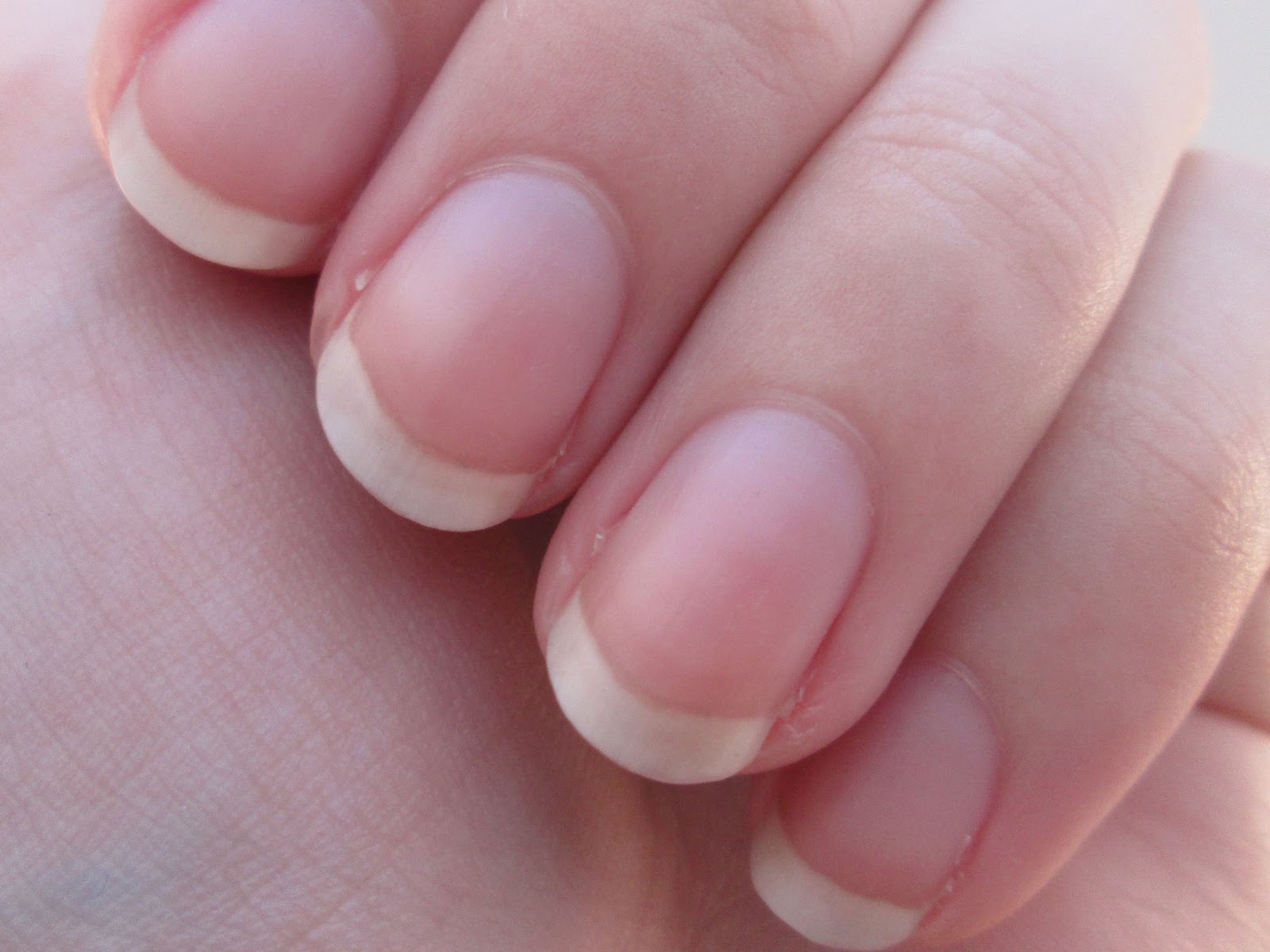
What Does No Moons on Fingernails Mean?
Moons, light half moon shaped, are situated at the base of the fingernails. Small or no moons are thought to indicate low blood pressure or underactive thyroid gland. Scientists have found that lack of moons on fingernail may suggest deficiency of vitamin B12 or iodine which normally feeds the thyroid gland. Lack of vitamin B12 is linked with loss of coordination and memory, lack of energy and depression among other conditions. On the other hand, deficiency of iodine is linked to breast cancer. There is also relation between carbon monoxide exposure and small moons. Regular check of vitamin B12 and iodine levels is essential to identify the health problems early. Moreover, reduce carbon monoxide exposure by staying more than 20 feet from the car and using ventilation system when in traffic.
You can judge when you are vitamin B12 deficient from other symptoms besides no moon on your fingernails.
- numbness
- memory problems
- tingling hands and feet
- diarrhea
- feeling exhausted
- burning sensation (possibly on thighs)
- lots of brown spots
- bleeding gums
- legs hurt and “jump” at night
- pain, including bone pain in legs
- heavy menstrual bleeding or nose bleeds
- depression
- sensitivity to noise
- balance and gait problems
Click here to learn how to ingest vitamin B12 from the daily foods.
Other Health Problems That Fingernails May Be Predicting
Besides no moons on fingernails, here are more nail conditions that may indicate health problems.
1. Brittle or Crumbly Nails
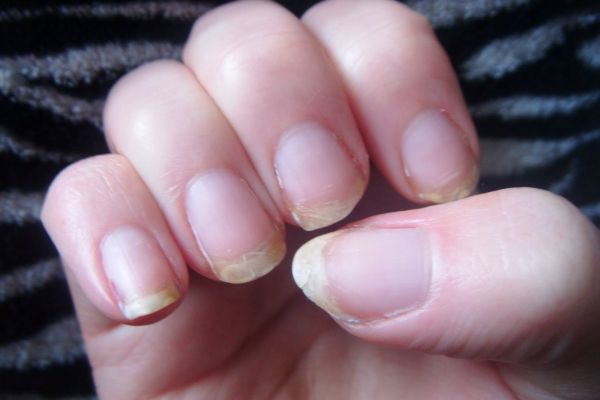
Brittle or crumbly nails can be caused by aging or long exposure to detergents and nail polish. However, sometimes it can be an indicator of fungal infection, thyroid disease, psoriasis, and lichen planus. In some uncommon cases, it can suggest reactive arthritis which is one painful form of inflammatory arthritis.
2. Discolored Nails
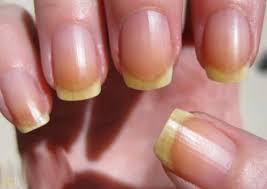
- Yellow Nails. This color can occur due to overuse of nail varnish and it can also indicate psoriasis and fungal nail infection. In some cases, it means other ailments such as jaundice, sinus infection, and lung infection.
- Green-Black Nails. They indicate bacterial infection, which occurs mostly under loose nails.
- Bluish or Purple Nails. They may be the indication of oxygen deprivation.
- Grey Nails. They may be caused by certain medications.
- Brown Nails. They maybe an indicator of malnutrition or thyroid disease. For nails that are half-white at the bottom and half brown at the tips, then kidney failure may be the cause.
- White Nails. They maybe a sign of fungal nail infection, aging, and other ailments such as cirrhosis, diabetes, malnutrition, heart failure, kidney failure, and hyperthyroidism.
3. Spoon-Shaped Nails (Koilonychia)
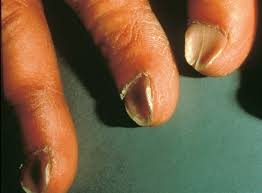
This is another condition besides no moons on fingernails. When the fingernails look scooped out or curve inwards, then it could indicate iron deficiency, hemochromatosis, Raynaud’s disease, hypothyroidism, and heart disease.
4. Beau’s Lines or Grooves Across the Fingernails
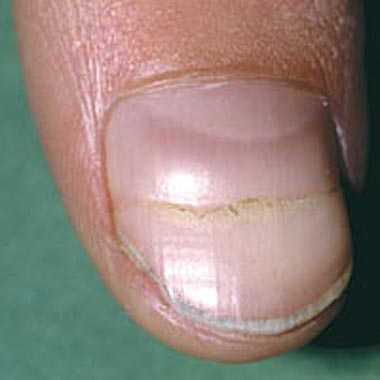
If you see deep grooves or lines that run across the nails, then it might be because of chemotherapy, exposure to cold temperatures, a previous injury, diabetes, Raynaud’s disease, vascular disease and illnesses associated with high fever and zinc deficiency.
5. Nail Clubbing
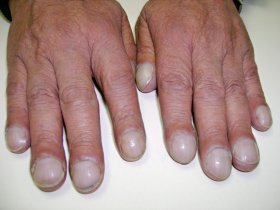
This is a situation whereby the nails and the fingertips are curved around the fingertips. It could be due to increased blood flow to the fingertips. When it occurs suddenly, it could be an indicator of low oxygen in the blood, which could mean lung diseases and other medical conditions such as inflammatory bowel diseases, AIDS, liver disease, or heart disease.
6. White Lines Running Across the Nails
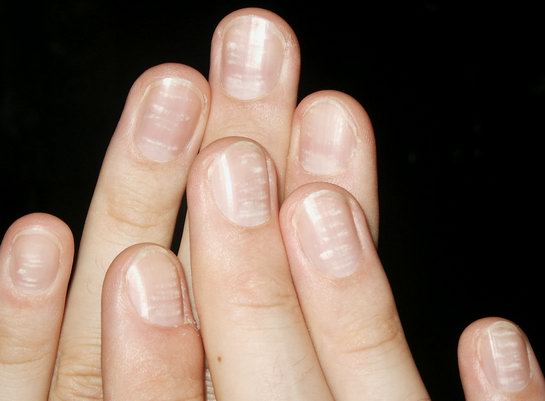
This is one common nail problem besides no moons on fingernails. In such a scenario, the lines run parallel to the base of the fingernails. However, this should not be confused with white spots or streaks. The parallel white lines indicate low levels of protein in the blood, and they could be caused by liver disease or malnutrition.
7. Dark Stripes Running Down the Nails
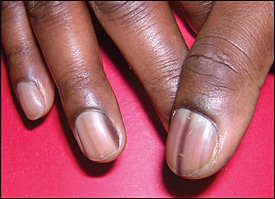
This is a common condition among people with dark skin and in most scenarios, it is normal. Nevertheless, sometimes it may be an indicator of skin cancer called subungual melanoma, and this cancer affects only one nail.
8. Red or Brown Little Streaks Under The Nails
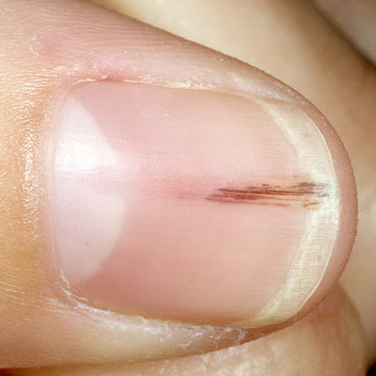
These are lines present because of damaged blood vessels and are referred to as splinter hemorrhages. It should not bother you, but if there are many nails affected then, it could be the indication of an underlying disease.
9. Other Nails
- Thickened Nails. This is commonly caused by fungal nail infection but sometimes by reactive arthritis or psoriasis. Thickened, yellowish, and slow growing nails could indicate lung diseases.
- Loose Nails. Loose nails that separate from the nail bed could be an indication of infection, an injury, thyroid disease, poor circulation, psoriasis, or allergic reactions to certain medicine.
- Pitting or Dents on the Nails. Small dents or pitting on the nails can indicate eczema, psoriasis, alopecia areata, and reactive arthritis.
Tips for Healthy Fingernails
You had better seek professional medical advice when you meet previous nail conditions. Follow these tips to have healthy fingernails.
• Avoid picking and biting your nails. Being too aggressive when cleaning or biting your nails can create stress fractures, and this can eventually cause nail breakage.
• Use protective gloves when cleaning. Remember to use protective gloves because they provide a barrier of protection against tough and harmful chemicals which breaks the nail down.
• Don’t soak the nails in water for too long. When you put nails too long in water, the nails tend to be weaker. Since they are weaker, they can tear more easily.
• Maintain your nails. Regular manicures such as cuticle care and nail filing are essential. In addition, moisturizing your cuticles with cuticle oil or cream on a daily basis is vital for maintaining beautiful and healthy nails.
• Wear winter gloves during the cold season. Winter temperatures can be very dry, causing nail deterioration. Always ensure that you wear gloves under such extreme temperatures.
